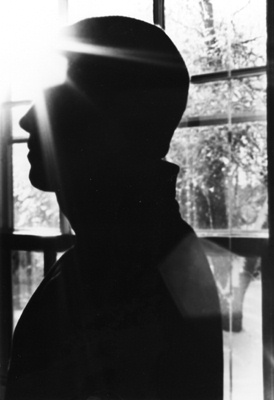All Nonfiction
- Bullying
- Books
- Academic
- Author Interviews
- Celebrity interviews
- College Articles
- College Essays
- Educator of the Year
- Heroes
- Interviews
- Memoir
- Personal Experience
- Sports
- Travel & Culture
All Opinions
- Bullying
- Current Events / Politics
- Discrimination
- Drugs / Alcohol / Smoking
- Entertainment / Celebrities
- Environment
- Love / Relationships
- Movies / Music / TV
- Pop Culture / Trends
- School / College
- Social Issues / Civics
- Spirituality / Religion
- Sports / Hobbies
All Hot Topics
- Bullying
- Community Service
- Environment
- Health
- Letters to the Editor
- Pride & Prejudice
- What Matters
- Back
Summer Guide
- Program Links
- Program Reviews
- Back
College Guide
- College Links
- College Reviews
- College Essays
- College Articles
- Back
What We See, What We Wear
I lifted the glass off the table and raised it to my lips. I sipped the tap-water gently and placed it back on the large table in front of me.
“I wonder where this was made,” I said to myself as I stared at the table’s frame.
The makeup artists were bumping into me as they brushed cover-up on the woman’s face.
“One minute ‘till show-time!”
The words echoed through the room and I glanced up at the lights; then at the camera man; then at my hands, folded neatly in my lap.
“Why am I doing this?” I asked myself.
The makeup artists ran off set. The lights turned on. The woman smiled at me, and then we began.
“Good Morning America!”
America: the home of the free and the brave, the home of commercial industries, the home of foreign slavery, the home of power-hungry teens. I’m miserable, but I smile.
“And here we are today with Robert Cody. This man has come on to the show to speak on his recent and breathtaking novel. Robert, how are you?” the woman asked.
“I’m well, and yourself?” I modestly replied.
“Great to hear, Mr. Cody. Now, let’s talk about your novel, it’s fiction, is it not?”
I chuckled. Then I wept.
“No, actually, it’s quite the contrary. My novel is non-fiction and, in fact, is based on interviews I’ve had with native Indian workers in Mumbai.”
“How exciting! It seems as if you’ve traveled a lot in your life. Now, tell me, how did you get the inspiration for this book?”
I rubbed my temples and took another sip of water. What I wouldn’t do for someone to kill me right now.
“I based my work on the article that I published in February of 2011. I had been sent to inspect reforms on fabric and manufacturing companies in America. Where I ended up, though, was so much further. I began to question where items, such as Nike shoes and Timberland boots were really made and immediately I was shot down.” I paused for a moment to swallow. The plastic shell of a woman in front of me nodded. A small amount of her cover-up had brushed off to reveal the imperfections of her skin underneath. I continued. “After the questions were left unanswered, I began to inspect crates, boxes, packages, mail, anything which could lead me to the source. As I was rummaging through dumpsters behind the Nike warehouse, I came across a notice which claimed that Nike corporations were actually purchasing their fabrics from Mumbai, India. Only four months passed before I was on my plane to India. I found myself roaming the streets of the city searching for a workplace which could create dyes for Nike.”
As I paused to take another breath of air, the shade in front of me interjected, exclaiming,
“Oh my! Quite the Christopher Columbus we’ve got here. What happened next? And why did you go through all the trouble?”
Her fake interest truly intrigued me. I moved my eyes away from her and glanced at my publisher who was standing next to the camera. He told me to “cut it out” and then flipped me the finger. I chuckled and pressed on.
“After I found myself in Mumbai, I began to question the people of the city. What, why, where, when, how? Anything I could think of to answer my questions regarding the connection between Nike shoes and this place. I was instructed, by one very poverty stricken gentleman, to walk towards the factories which lined the edge of town. I was no longer in Mumbai, but, instead, I found myself in some dark and evil place. I walked towards a large warehouse and banged on the first door I saw. The black paint chipped as I hit my fist against it. No answer. So, instead, I walked around. I saw a man, Davoud, standing near a door. I approached him and everything changed. He spoke broken English, I do admit, but it was enough for me to understand what was occurring. He explained how poor he was and how much he needed this money to support his family after he was laid off. I asked him about the bruises on his bleached and dirty arms and he claimed “da machines” did it to him. As he spoke, my heart sank more and more into my stomach. I asked if I could see the inside of the factory. He would not allow me inside. Instead, he brought me to a window where I was able to look at the workers inside. Davoud, who was in his late thirties, or so he appeared, found himself working with a fifteen year old boy. This boy had sweat and dirt all over his face while he scrubbed machinery clean of chemicals. He wore one sandal and a shirt which looked much too large for his size. Before I left the premises, completely in tears, I took a photograph. I returned home. I never went back to India.”
I blinked. The power of my words was, to me, one which was immense. I felt my mind being relieved of a burden which was beyond belief. I opened my eyes. I picked my head up. I stared into those glossy, horrific eyes in front of me. She moved her lips in a way which looked much like a smile.
“That was very breathtaking. Your work is far superior to anything I could ever do,” she said.
“Well thank yo-,” I began to exclaim.
“And with that we come to a commercial break. Everyone say goodbye to our first guest and welcome out next guest on today’s show when we come back.”
It all went black.

Similar Articles
JOIN THE DISCUSSION
This article has 0 comments.
